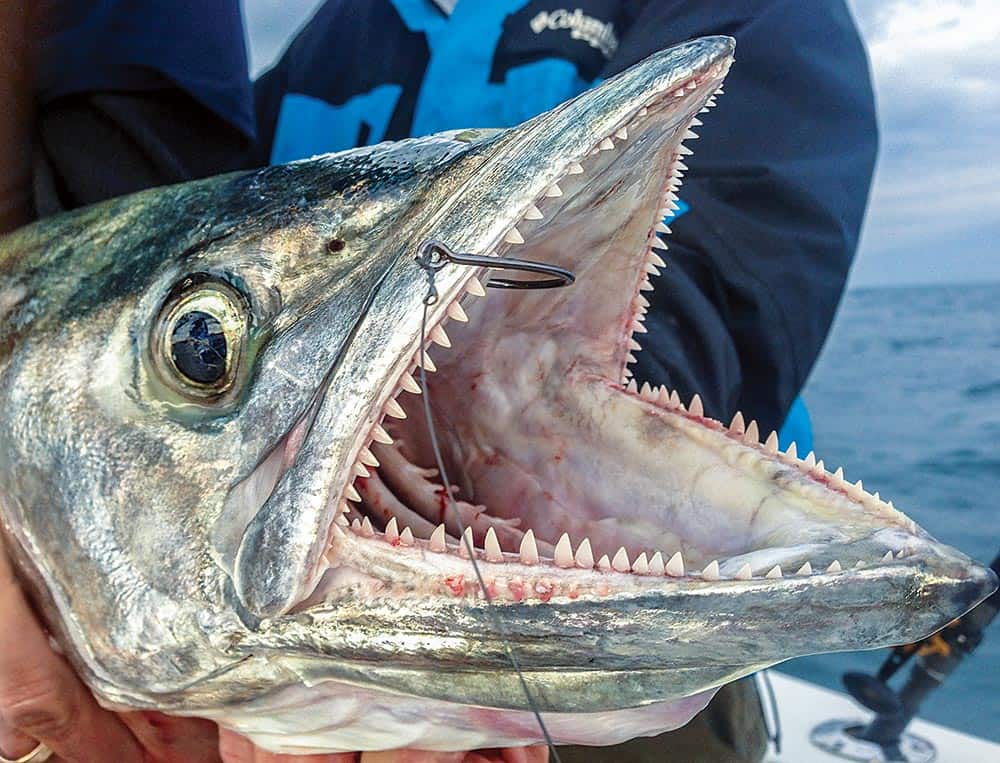Key West King Mackerel Fishing
This fish has a sleek, torpedo-like body that makes it unique. The king mackerel, or kingfish, normally folds its pectoral (side) and first dorsal (top) fins into its body in order to reduce water resistance. Its other fins stay up in order to help the fish maneuver while swimming.
This species has a distinctive forked tail and a pointed snout. The kingfish has a white underbelly with darker silver scales near the top of its body and indistinct spots or bars on its sides.

This fish likes cool, relatively shallow coastal waters staying at depths between 40-150 feet, with the largest numbers occurring between 75-110 feet. The king mackerel generally grows to lengths of 20-40 inches with females being larger than males.
The largest reported fish of this species was 72 inches long and weighed 99 pounds. Females generally live 14 years and males 11, however, king mackerel older than 20 years are known to exist.
This is a migratory fish and the populations of the Atlantic Ocean and the Gulf of Mexico migrate separately. The dividing line of these two populations changes depending on the time of year, but it is always close to south Florida.
Like many of its closest relatives, the kingfish prefers to eat schooling fish. Prey items include cigar minnows, Pilchards, Blue Runners, Ballyhoo, Yellowtail, squid and shrimp.
Predators of the king mackerel include pelagic sharks, Bottlenose dolphins and Barracuda. Spawning occurs between May and September with two peaks; the first from late May until early July and the second from late July through early August.
Males of this species reach sexual maturity at age three while females do not mature until age four. The fish spawn in the northern reaches of their ranges, either in the northern Gulf of Mexico or the mid-Atlantic.
How I fish for King Mackerel
First and foremost you need wire to catch King mackerels I recommend #5 to # 7 wire. This is a must because there very sharp saw like teeth can cut through plane mono before you can even feel a tug. I love to use live bait for these very aggressive predatory fish. I’ve found the faster the bait the better so Blue runners, Goggle eyes, and Speedos are highly effective. Smaller King mackerels are not usually to picky and will hit live and dead baits just the same on most days. Bean-jigs and buck-tail jigs are great along with almost all Rapala type lures.

With live baits I run a double treble hook rig with on in the back of the fishes head and the second in the tail. Many times on the initial bit the King will cut the bait clean in half eat the tail end and then gulp that down turn around and eat the front half of the bait. This is why one hook both front and back can be critical for hook ups.
